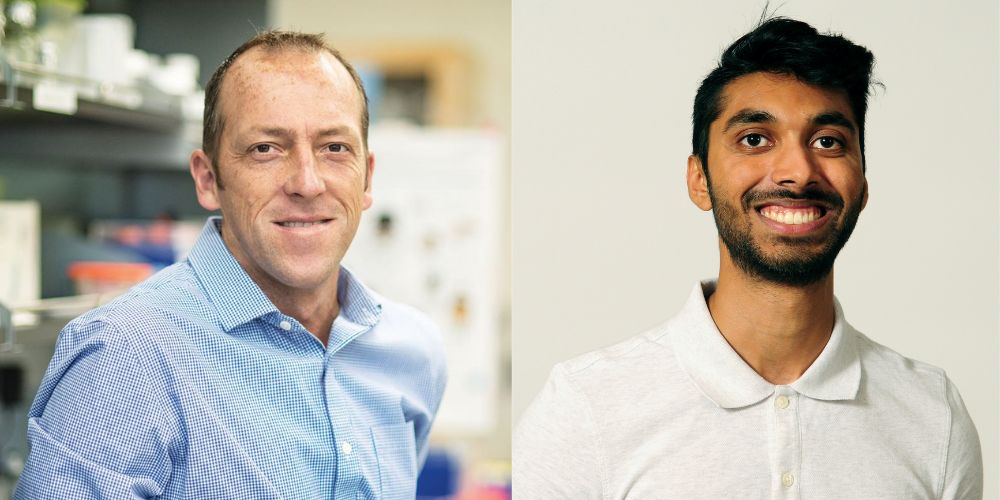Can snakes shed light on human regenerative capacity?
.jpg?revision=e4614aae-09f7-4400-b48b-bb886b4a1bde)
All animals possess some capacity for repairing and replacing the lining of their intestines, a process called intestinal regeneration. In mammals, including humans, this constant but relatively minor turnover of cells helps the intestine keep up with the daily requirements of eating. It is accomplished by stem cells that originate in intestinal crypts—microscopic depressions in the intestinal wall.
In stark contrast, snakes that feed infrequently—such as boas and pythons who can go weeks without a meal—do not possess intestinal crypts, yet they undergo some of the most extreme examples of intestinal regeneration found in the animal kingdom. When these snakes fast for long periods, their intestines become atrophied, shrunken and almost entirely non-functional. However, when they feed, their intestines undergo massive regenerative growth, more than doubling in mass in 48 hours and rebuilding much of the intestinal cells and structures required to digest and absorb food. This shift is also accompanied by huge changes in the snakes’ physiology and metabolism.
To understand how these large snakes can regenerate their intestines without intestinal crypts, scientists from The University of Texas at Arlington, UT Southwestern Medical Center and the University of Alabama sequenced the RNA genes of pythons. By learning more about this process in reptiles, researchers hope to better inform other scientists working to improve the diagnosis and treatment of gastrointestinal diseases in humans, including diabetes, Crohn’s disease, celiac disease, and cancer.

“We used single-cell RNA sequencing to study intestinal regeneration in pythons and found that they use conserved pathways that are also found in humans, but activate them in unique ways,” said Todd Castoe, professor of biology at UT Arlington and the author of the study published in the Proceedings of the National Academy of Science.
“Interestingly, we found the signaling pathways that regulate python regeneration share key similarities to those observed in humans after they undergo Roux-en-Y gastric bypass to facilitate weight loss and type 2 diabetes treatment,” said Siddharth Gopalan, co-author of the paper and a Ph.D. student in Dr. Castoe’s lab.
These findings provide new insight on the fundamental links between intestinal regeneration and how the body adjusts its metabolism in response to changes like nutrient availability and exposure to stress. The research also helps explain how pathways involved in python regeneration may work similarly in other vertebrates, including humans, and thus represent potential targets for therapeutic intervention to treat intestinal or metabolic diseases.
“Our findings also shed light on the importance of a specific intestinal cell type—called BEST4+ cells—in coordinating the regeneration process,” said Castoe. “These cells are present in pythons and humans, but absent in commonly studied mammals like mice, yet they act as central regulators of early phases of regeneration by promoting lipid transport and metabolism. These findings highlight the importance and largely neglected roles BEST4+ cells likely play in human intestinal function.”
Together, these findings expand our understanding of intestinal physiology.
“Learning more about digestion in other animals gives us a broader understanding of the evolutionary design of these important functions of the body,” said Castoe. “This new information will inform our understanding of the body with the goal of improving treatment and prevention of many common human digestive disorders.”
***
Support for this project was provided by the National Science Foundation award IOS-655735.
About The University of Texas at Arlington (UTA)
Located in the heart of the Dallas-Fort Worth Metroplex, The University of Texas at Arlington is a comprehensive teaching, research, and public service institution dedicated to the advancement of knowledge through scholarship and creative work. With an enrollment of approximately 41,000 students, UT Arlington is the second-largest institution in the UT System. UTA’s combination of outstanding academics and innovative research contributes to its designation as a Carnegie R-1 “Very High Research Activity” institution, a significant milestone of excellence. The University is designated as a Hispanic Serving-Institution and an Asian American Native American Pacific Islander-Serving Institution by the U.S. Department of Education and has earned the Seal of Excelencia for its commitment to accelerating Latino student success. The University ranks as the No. 1 national public university in the U.S. for veterans (Military Times, 2024), No. 4 in Texas for advancing social mobility (U.S. News & World Report, 2025), and No. 6 in the United States for its undergraduate ethnic diversity (U.S. News & World Report, 2025). UT Arlington’s approximately 270,000 alumni occupy leadership positions at many of the 21 Fortune 500 companies headquartered in North Texas and contribute to the University’s $28.8 billion annual economic impact on Texas.